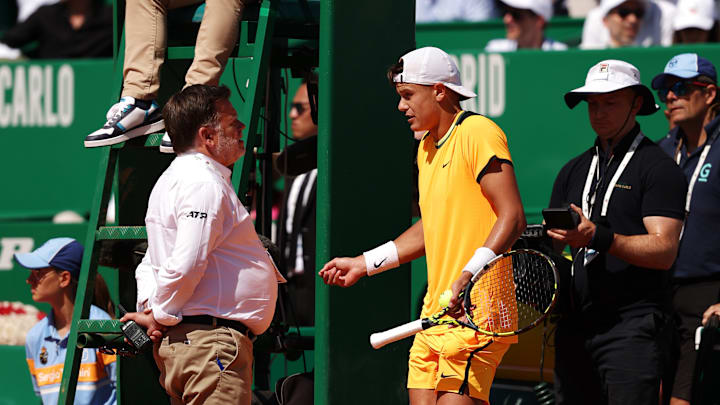Clay-court tennis is messy on many fronts. It is difficult for the players' footing, and shotmaking, and it is nearly impossible for the lines people and chair umpire to make line calls with 100 percent confidence by trusting a mark that may or may not be the right one for the point.
Daniil Medvedev and Holger Rune both dealt with questionable calls in Monte Carlo. In Medvedev's case, it happened in two different matches. Rune's bad call came during the second set tiebreaker against Jannik Sinner in the quarterfinals.
so frustrating this day in age and i say it all the time, absolutely 💯 ridiculous we don’t have replays for incidentals and hawkeye on clay, unless obvious umpires so often now interpreting the mark wrong 😑 and find wrong marks late ⏰ in sets
— Brad Gilbert (@bgtennisnation) April 12, 2024
Electronic line calling technology is not used at most clay court tournaments, including the French Open. That means the linesmen make the call with their bare eyes looking at a ball mark, and the chair umpire has the right to overrule the call. The players should be upset about this imperfect system that can cost them games, sets, and matches, but what can be done about it?
Technology is available but not used on most clay courts
Hawk Eye is the prevalent technology players and fans are most familiar with. It works best on hard and grass courts where it is more user-friendly. FoxTenn is employed on selected clay courts at Barcelona, Madrid, Estoril, Rio, Charleston, and Bastad. Though FoxTenn claims to be infallible on clay, that does not appear to be the case as the players complain about its accuracy. Taylor Fritz famously tweeted (and later deleted the tweet) that he would challenge anything remotely close when FoxTenn is used because he does not trust it.
The bare eye is not good, and the technology is perceived as flawed so what is the solution? The other problem is that the clay court tournaments are reluctant to eliminate the human element of the game. It is unclear why this is true as other tournaments have made the transition rather easily.
If the officials must be kept for tradition's sake, why not fine or suspend them for making bad calls? These people will argue that human error is a fact of life and not be amenable to such penalties, but the players might like the idea. Or why not employ the officials and allow the technology to be the decider if a player challenges a bad call?
Unless the ATP and WTA force the clay court tournaments to use technology, these issues will continue. At what point, might the tournaments relent on their own? Will it take terrible calls that overshadow the play or potentially alter the results of the tournament? It feels like those are possibilities that could happen if the status quo is maintained.
